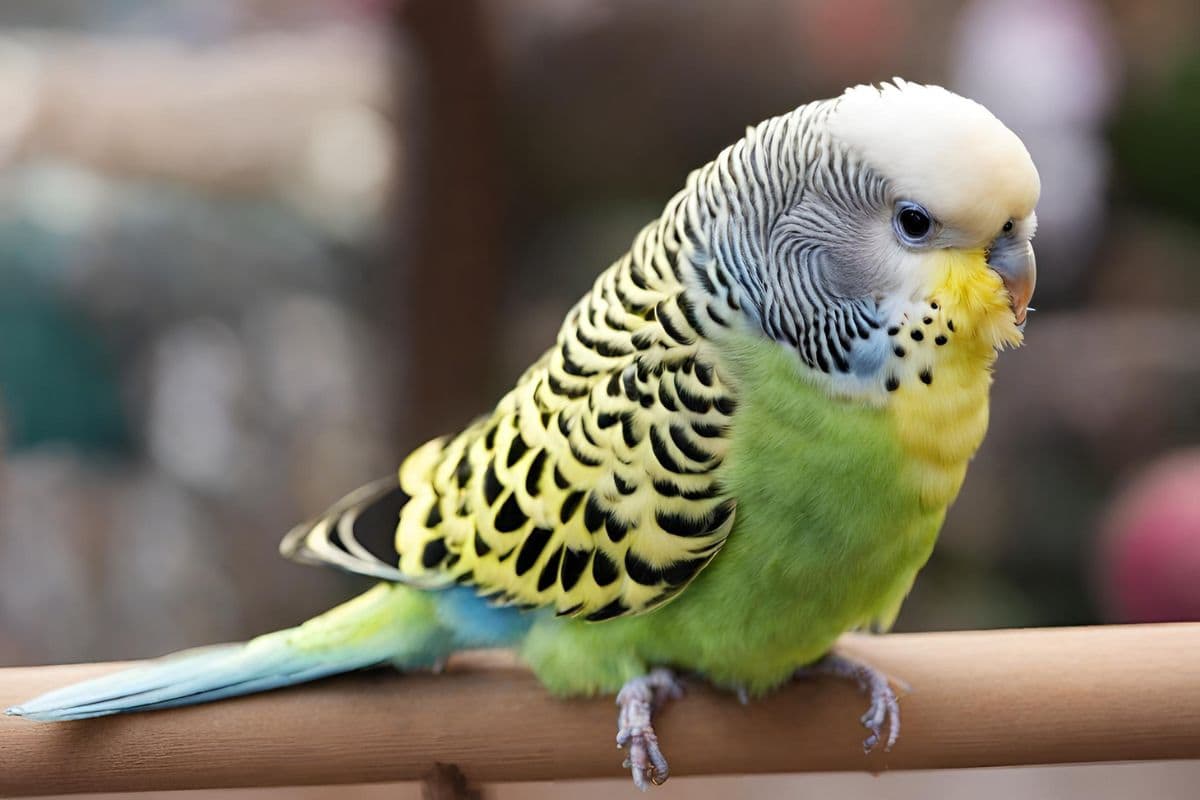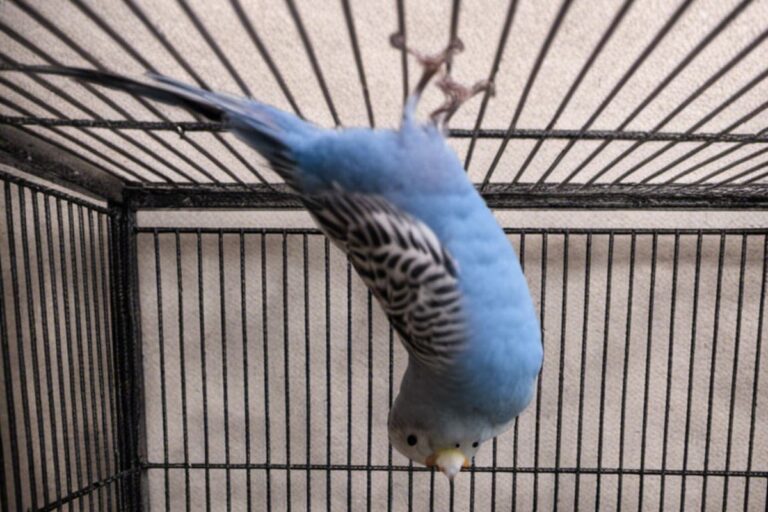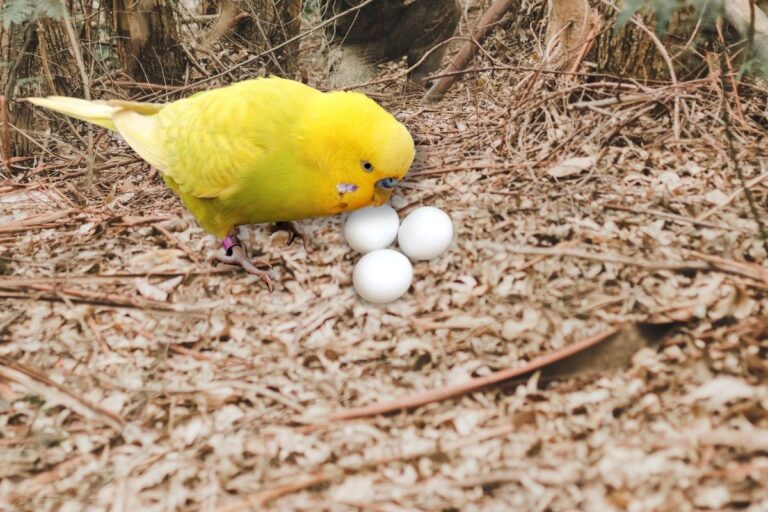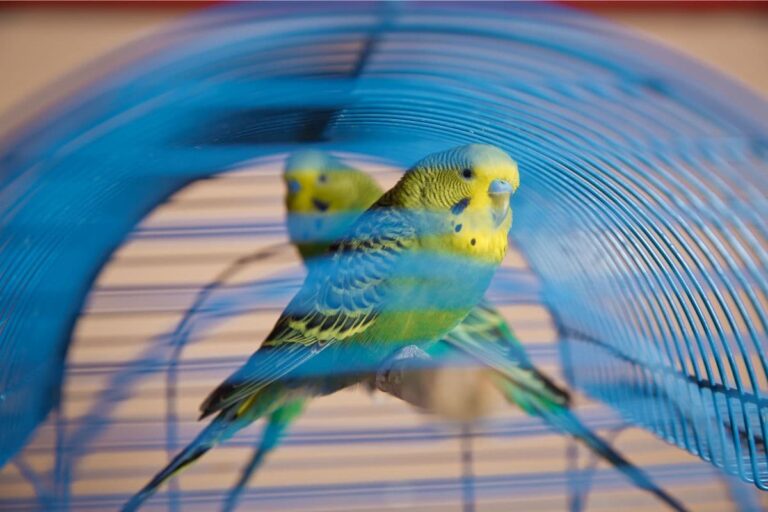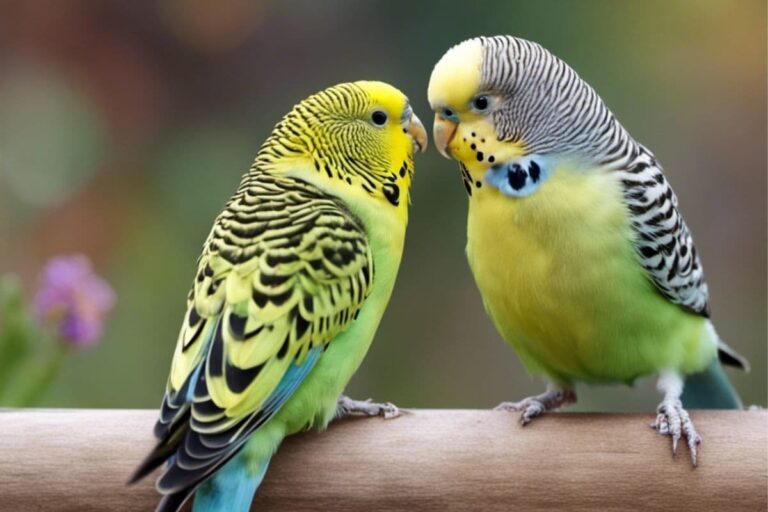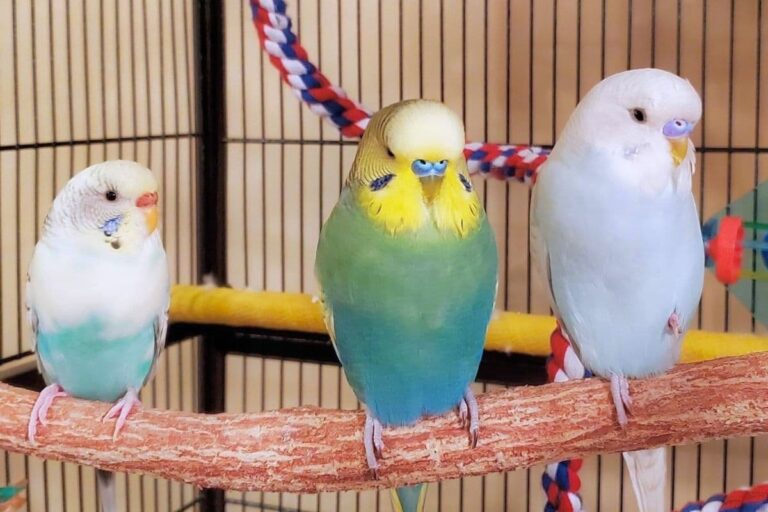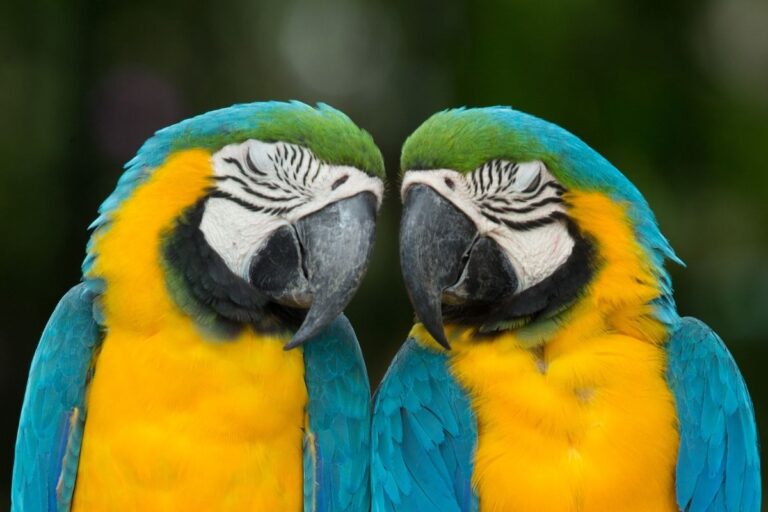Why Do Parakeets Fluff Up
Disclosure: The opinions expressed in this post are my own. This post may also contain affiliate links, which means that I will receive a commission if you decide to purchase through my links, at no additional cost to you. As an Amazon Associate, I earn from qualifying purchases.
Have you ever noticed your parakeet fluffing up its feathers and wondered why? It’s a common behavior and it can serve several purposes and have various meanings. It isn’t a bad sign most of the time, but understanding why parakeets fluff up can help you better care for and communicate with your feathered friend.
In this article, we will delve deeper into the reasons why parakeets fluff up, exploring the different factors that can influence this behavior.
8 Reasons Why Your Parakeet is Puffing Up
It’s not uncommon to see your pet parakeet puffing up its feathers from time to time. While it may seem cute or endearing, there are actually several reasons why your parakeet may be puffing up.
Understanding these reasons can help you ensure the well-being and happiness of your feathered friend. Here are 8 possible reasons why your parakeet is puffing up:
1. A Sign of Being Calm & Content
When parakeets fluff up their feathers, it is often a sign of being calm. Fluffing up is a natural and normal behavior that parakeets exhibit when they feel safe, secure, and at ease. It is a way for them to relax. Similar to how we might snuggle up under a cozy blanket, parakeets fluff up their feathers to create a sense of security and relaxation.
In addition to being a sign of calmness, fluffing up can also indicate that a parakeet is content with its surroundings. Parakeets are social birds and thrive when they feel secure and comfortable in their environment. When they fluff up, it is a sign that they are content with their cage, their companions, and the overall conditions of their home.
2. Regulating Body Temperature to Maintain Warmth
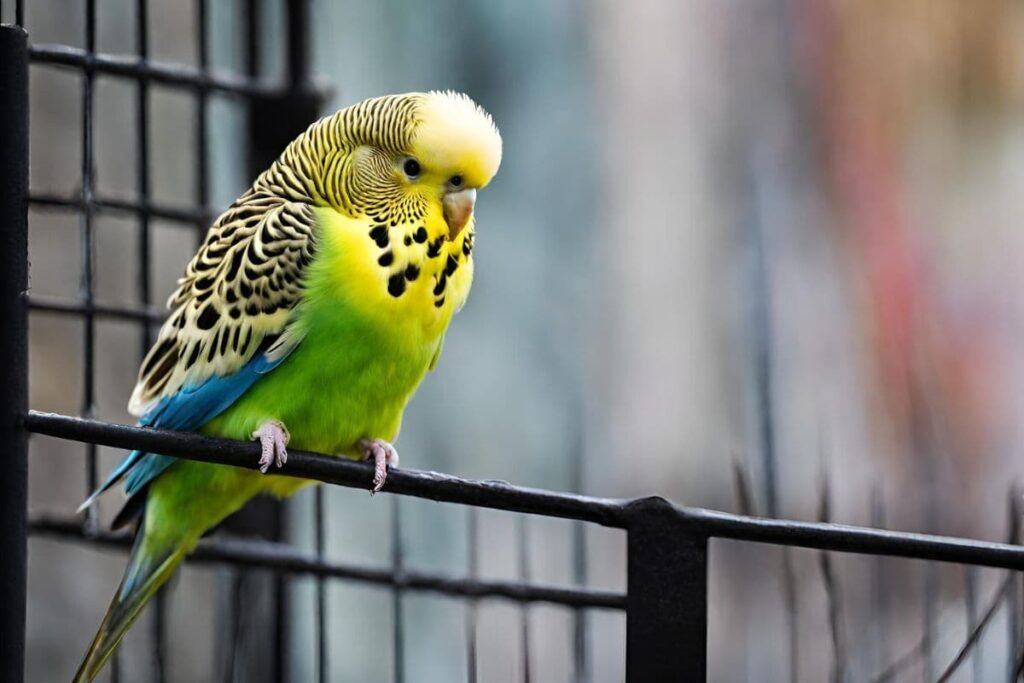
Parakeets have their own unique ways of regulating their body temperature. Since they do not have sweat glans like us, parakeets fluff up to regulate their body temperature and maintain warmth. Fluffing up their feathers creates an insulating layer of air between their feathers, which helps to trap heat close to their bodies.
Since parakeets are small birds with high metabolic rates, they tend to lose heat quickly. Fluffing up their feathers helps them to conserve body heat and stay warm, especially during colder temperatures or in drafty environments. By creating this fluffy layer, they are essentially creating a barrier against the cold air and preventing heat loss.
Fluffing up also helps parakeets to control their body temperature in warmer weather. When it’s hot, parakeets will fluff up their feathers to increase air circulation and promote cooling. By creating more space between their feathers, they allow air to flow through and help dissipate excess heat.
3. Getting Ready for Sleep
Fluffing up can also be commonly observed in parakeets as they prepare for sleep. It is a natural instinct since doing it helps them to regulate their body temperature. This behavior helps them retain body heat and stay warm during the night when temperatures may drop.
Additionally, fluffing up is a way for parakeets to relax and get comfortable before sleep. By puffing up their feathers, they create a soft and cozy nest-like environment, providing a sense of security and comfort. This behavior mimics the natural instinct of birds to settle down and prepare for rest.
4. Grooming & Preening Itself
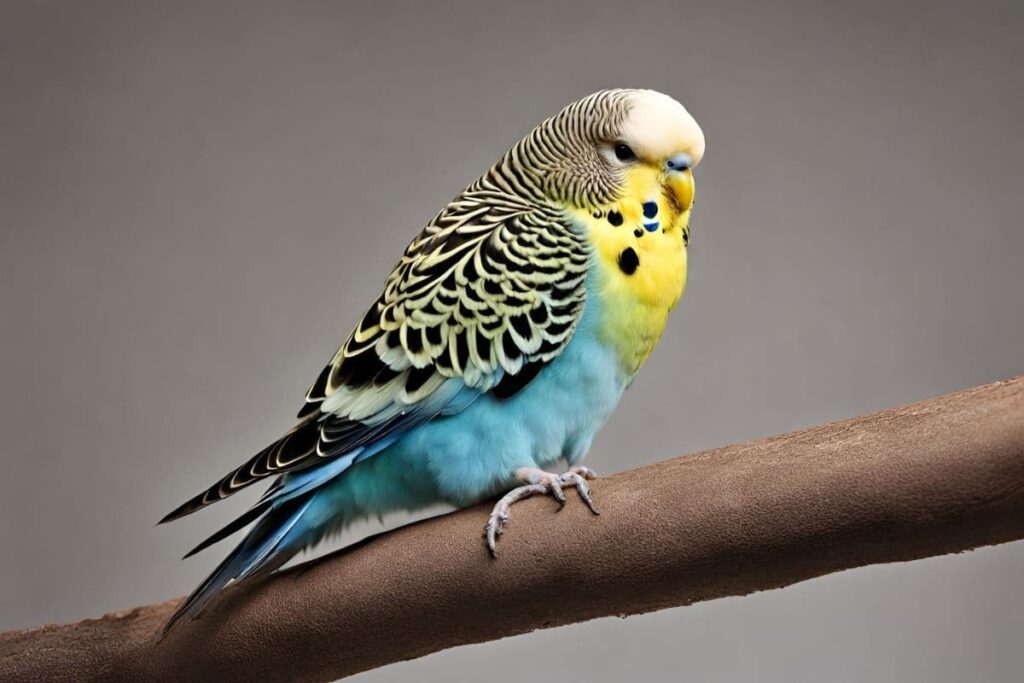
Grooming is an essential part of a parakeet’s daily routine, as it helps them maintain their feathers in top condition.
Parakeets have a specialized gland called the uropygial gland, also known as the preen gland, located at the base of their tail. This gland secretes an oil that is used during grooming. When a parakeet fluffs up, it is often a sign that it is spreading this oil onto its feathers.
By fluffing up and spreading the preen oil, parakeets are able to keep their feathers clean, shiny, and waterproof. The oil helps to prevent their feathers from becoming dry, brittle, or damaged. It also acts as a natural barrier against dirt, dust, and parasites.
In addition to applying the preen oil, parakeets also use their beaks to remove any dirt, debris, or loose feathers from their plumage. They will meticulously go through each feather, straightening and aligning them to maintain optimal insulation and flight performance.
Grooming and preening are not only important for the physical well-being of parakeets but also for their mental and emotional health. It is a form of self-care and a way for them to maintain a sense of comfort and cleanliness.
5. Physical Discomfort, Illness or Health Issues
When parakeets puff up, it can be an indication of physical discomfort, illness, or health issues. As pet owners, it is important to pay attention to these negative signs and take appropriate action to ensure the well-being of our sick birds.
One possible reason for a parakeet fluffing up is that they their environment is just too cold. Fluffing up their feathers helps to trap air and create insulation, keeping them warm. If the room temperature is too low or there is a draft, it can cause discomfort to the parakeet. Providing a warm and cozy environment, such as placing their cage away from windows or using a heat lamp, can help alleviate this issue.
Illness or health issues can also cause parakeets to fluff up. Respiratory infections, for example, can lead to fluffing up as the bird tries to conserve energy and stay warm. Other signs of illness may include lethargy, loss of appetite, sneezing, or discharge from the eyes or nostrils.
Parakeets may also fluff up due to discomfort caused by physical ailments. For instance, injuries, such as a broken wing or leg, can make them fluff up as they try to protect the affected area. Gastrointestinal issues, like crop impaction or constipation, can also cause discomfort and fluffing up.
If you suspect your parakeet is experiencing physical discomfort or other symptoms, it is important to seek veterinary attention promptly.
6. Get Ready for a Bath
Bathing is an important part of a parakeet’s grooming routine, and it helps to keep their feathers clean and healthy. So when a parakeet fluffs up its feathers, it is preparing itself for a bath by creating pockets of air between the feathers. This helps to absorb and distribute water evenly across their body. Fluffing up also helps to keep the parakeet warm during the bathing process.
To prepare a bath for your parakeet, you can place a shallow dish filled with lukewarm water in their cage or provide them with a birdbath specifically designed for small birds. It is important to ensure that the water is not too deep to prevent any accidents or discomfort for your parakeet.
Once the bath is ready, you may notice your parakeet hopping into the water, splashing around, and fluffing up its feathers even more. This is a sign that your feathered friend is enjoying the bath and taking the opportunity to clean its feathers.
Bathing not only helps to keep a parakeet’s feathers clean but also helps to maintain their overall health. It can help to remove dirt, dust, and parasites from their feathers, preventing any potential skin irritations or infections.
7. Sign of Being Upset or Scared
Your budgie may fluff up because it is feeling threatened or scared. When parakeets sense danger or feel stressed, they will puff out their feathers to appear larger and more intimidating to potential predators. This is a natural defense mechanism that helps them protect themselves in the wild.
Fluffing is also a sign that they are upset or agitated. This behavior is known as “piloerection” and is their way of displaying their emotions. Understanding why parakeets fluff up can help you better care for and communicate with your feathered friend.
8. Display of Courtship
When a male parakeet is interested in attracting a mate, he may fluff up his feathers to appear larger and more impressive. This is a way for him to show off his physical condition and attractiveness to potential mates.
Fluffing up their feathers can also be a way for parakeets to show off their vibrant colors and patterns. Male parakeets often have more colorful feathers compared to females, and by fluffing up, they can make their colors appear even more vibrant and eye-catching.
During courtship displays, male parakeets may also bob their heads, chirp or sing, and perform various other movements to attract the attention of female parakeets. Fluffing up their feathers is just one part of this elaborate courtship ritual.
What Should You Do When Parakeet is Fluffed Up?
When you notice that your parakeet is fluffed up, it is important to take action and ensure the well-being of your feathered friend. Fluffing up could be a natural behavior for parakeets, but it can also be a sign of potential health issues or discomfort.
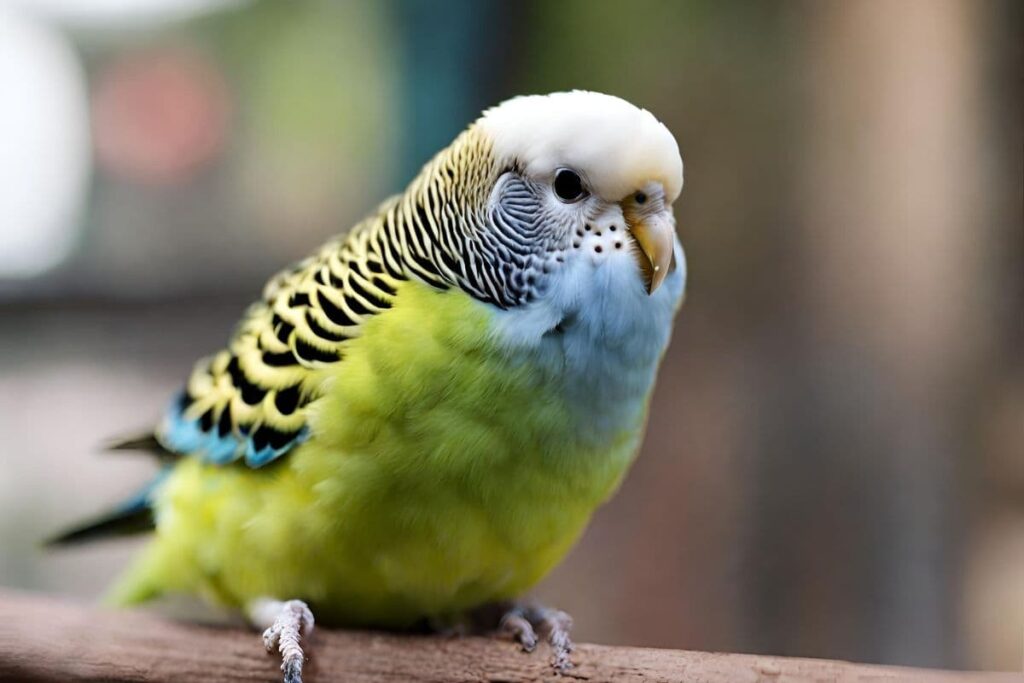
- Fluffing up can just be a normal response to environmental factors: Parakeets may fluff up their feathers to regulate their body temperature, preparing for a bath, or just getting ready for sleep. Ensure that your parakeet’s cage is located in a draft-free area and provide a warm and comfortable environment for them.
- Observe your parakeet closely: Look for any other signs of illness or distress, such as changes in appetite, droppings, or behavior. If you notice any concerning symptoms, it is best to consult with an avian veterinarian for a professional opinion and guidance.
- Create a calm and secure environment: Assess the surroundings and try to identify any potential stressors, such as loud noises, sudden changes in routine, or the presence of predators (including other pets). Creating a calm and secure environment for your parakeet can help alleviate their stress and prevent excessive fluffing. Additionally, you can try adjusting the temperature in the room by providing a heat source, such as a heat lamp or a heating pad placed underneath a portion of their cage. However, it is crucial to monitor the temperature closely and avoid overheating your parakeet.
- Seek a veterinarian’s advice if unsure: Parakeets are known to hide signs of illness, so it is crucial to pay attention to any changes in their appearance or behavior. If your parakeet continues to fluff up for extended periods, shows decreased activity, or exhibits other concerning symptoms, it is essential to seek professional veterinary care.
How to Warm Up a Cold Parakeet?
If you notice that your parakeet is fluffing up and seems cold, it’s important to take immediate action to warm them up. A cold parakeet can be a sign of illness or discomfort, so it’s crucial to address the issue promptly. Here are a few steps you can take to warm up a cold parakeet:
- Provide a heat source: One of the easiest ways to warm up a cold parakeet is by providing a heat near their cage. You can use a heat lamp or a heating pad. Make sure to place the heat source at a safe distance from your parakeet and monitor their comfort levels to prevent overheating, accidents or burns.
- Increase the ambient temperature: If the room your parakeet is in is too cold, consider turning up the heat or using a space heater to raise the temperature of the entire area. Parakeets are sensitive to temperature changes, so maintaining a moderate temperature and warm environment is essential for their well-being.
- Create a cozy environment: Make sure your parakeet has access to a comfortable space. Provide plenty of soft bedding material, such as shredded paper for them to snuggle into. You can also cover their cage with paper towels to trap heat and create a cozy environment.
How to Tell If Parakeet is Sick or Feeling Unwell?
It’s important for parakeet owners to be able to recognize when their feathered friend is sick or feeling unwell. While parakeets are generally hardy birds, they can still fall ill and may not always show obvious signs of distress. Here are some key indicators to look out for:
1. Changes in Behavior
If your parakeet suddenly becomes more lethargic, withdrawn, or unusually aggressive, it may be a sign of illness. Pay attention to any changes in their usual habits or routines.
2. Changes in Appetite and Water Intake
A decrease in appetite or a sudden increase in water consumption can be a red flag. Parakeets are small birds with high metabolic rates, so any significant change in their eating or drinking habits should be monitored closely.
3. Abnormal Droppings
Keep an eye on your parakeet’s droppings. If you notice a change in color, consistency, or frequency, it could indicate an underlying health issue. Diarrhea, excessive urination, or blood in the droppings are all signs that a trip to the avian veterinarian is in order.
4. Respiratory Problems
Labored breathing, wheezing, sneezing, or coughing can be indicative of respiratory infections or other respiratory issues. Look out for any signs of difficulty breathing or abnormal sounds coming from your parakeet’s respiratory system.
5. Changes in Appearance
A parakeet that appears fluffed up, with ruffled feathers or a dull appearance, may be unwell. Feather plucking or bald patches can also be signs of stress or illness. Take note of any weight loss or changes in the plumage of your parakeet.
6. Changes in Vocalization
Parakeets are known for their chirping and singing, so if your bird suddenly becomes quiet or starts making unusual sounds, it could be a sign of distress or illness.
7. Physical Symptoms
Keep an eye out for any visible signs of injury or abnormalities such as swollen eyes, crusty beak, or lumps and bumps on their body. These could be signs of infection or injury.
What to Do If Parakeet is Sick?
If you notice any of these signs or suspect that your parakeet is unwell, it’s crucial to seek professional veterinary care. Avian veterinarians are specially trained to diagnose and treat birds, so they will be able to provide the best care for your feathered friend. Remember, early detection and treatment can greatly increase the chances of a full recovery for your parakeet.
Final Words
In conclusion, understanding why parakeets fluff up is essential for any parakeet owner. It is a natural behavior that serves various purposes, including regulating body temperature, expressing emotions, and attracting a mate. By paying attention to your parakeet’s body language and providing a comfortable and stimulating environment, you can ensure their well-being and happiness.
Remember, fluffing up is not always a cause for concern. However, if you notice any other unusual behaviors or signs of illness, it is crucial to consult with a veterinarian specialized in avian care.



